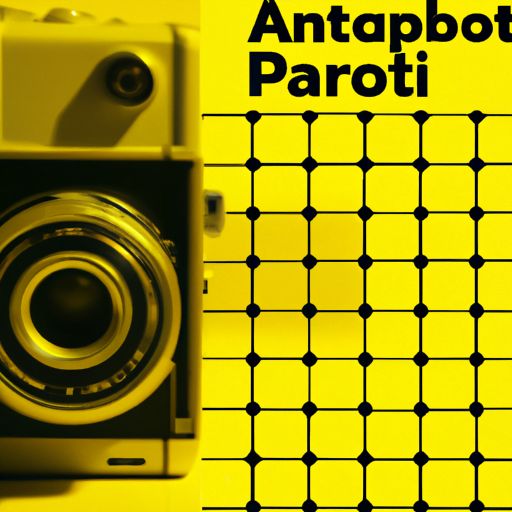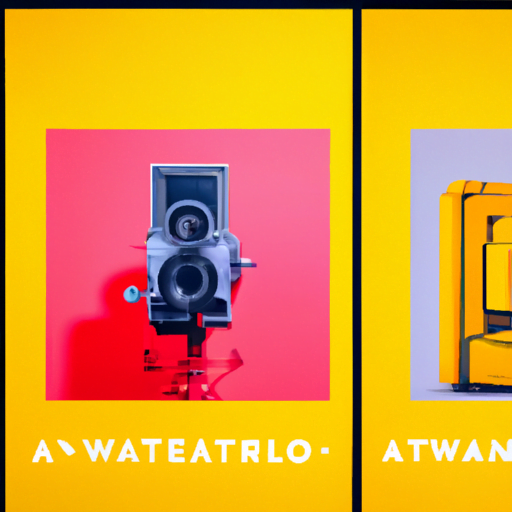
-
Table of Contents
- The Aesthetics of Retro Technology Design
- The Rise of Retro Technology Design
- The Appeal of Retro Technology Design
- 1. Aesthetic Appeal
- 2. Emotional Connection
- 3. Unique User Experience
- Case Studies: Successful Retro Technology Designs
- 1. Polaroid Originals
- 2. Nintendo NES Classic Edition
- The Future of Retro Technology Design
- Conclusion
The Aesthetics of Retro Technology Design

Technology has come a long way in the past few decades, with sleek and minimalist designs dominating the market. However, there is a growing trend towards retro technology design, where products are intentionally designed to resemble older, vintage technology. This article explores the aesthetics of retro technology design, its appeal to consumers, and the reasons behind its resurgence in popularity.
The Rise of Retro Technology Design
In recent years, there has been a noticeable increase in the popularity of retro technology design. From record players to typewriters, consumers are embracing the nostalgia and charm of vintage technology. This trend can be attributed to several factors:
- Nostalgia: Retro technology design taps into a sense of nostalgia, reminding people of simpler times and evoking fond memories of their past. It allows individuals to reconnect with their personal history and relive the experiences associated with older technology.
- Unique Aesthetics: Retro technology design often features unique and eye-catching aesthetics that stand out in a sea of modern, minimalist designs. The use of bold colors, intricate details, and distinctive shapes adds character and personality to these products.
- Escape from Digital Overload: In today’s digital age, where screens dominate our lives, retro technology design offers a refreshing break from the constant bombardment of technology. It provides a tactile and tangible experience that is often lacking in modern devices.
The Appeal of Retro Technology Design
So why are consumers drawn to retro technology design? What makes these vintage-inspired products so appealing? Let’s explore some of the key factors:
1. Aesthetic Appeal
Retro technology design offers a unique aesthetic appeal that sets it apart from modern designs. The use of vibrant colors, intricate patterns, and nostalgic details creates a sense of visual interest and nostalgia. These designs often evoke a sense of warmth and familiarity, making them visually appealing to consumers.
2. Emotional Connection
Many consumers have a deep emotional connection to older technology. Whether it’s memories of listening to vinyl records with their parents or typing on a vintage typewriter in their childhood, retro technology design taps into these emotional connections. It allows individuals to relive and recreate these experiences, fostering a sense of nostalgia and sentimentality.
3. Unique User Experience
Retro technology design often offers a unique user experience that differs from modern devices. For example, using a manual typewriter requires physical effort and precision, creating a tactile and immersive experience. Similarly, listening to music on a record player involves carefully placing the needle and enjoying the crackling sound of vinyl. These experiences provide a break from the instant gratification and convenience of modern technology.
Case Studies: Successful Retro Technology Designs
Several companies have successfully embraced retro technology design, capitalizing on the growing demand for vintage-inspired products. Let’s take a look at some notable case studies:
1. Polaroid Originals
Polaroid Originals, formerly known as The Impossible Project, is a prime example of a company that has successfully revived retro technology design. They brought back the iconic Polaroid instant camera, capturing the hearts of photography enthusiasts and nostalgia seekers alike. The camera features the classic Polaroid design, complete with the square format and the instant photo development process. By combining the nostalgia of instant photography with modern technology, Polaroid Originals has created a successful product that appeals to a wide range of consumers.
2. Nintendo NES Classic Edition
Nintendo’s release of the NES Classic Edition is another example of the successful implementation of retro technology design. The console is a miniature replica of the original Nintendo Entertainment System (NES) from the 1980s. It comes pre-loaded with a selection of classic games, allowing gamers to relive their childhood memories. The NES Classic Edition’s retro design, complete with the iconic rectangular shape and the classic gamepad, has been a hit among both nostalgic adults and younger gamers who appreciate the simplicity and charm of retro gaming.
The Future of Retro Technology Design
As the popularity of retro technology design continues to grow, it raises the question of its future. Will this trend be short-lived, or is it here to stay? While it’s difficult to predict the future with certainty, there are several factors that suggest retro technology design will remain relevant:
- Continued Nostalgia: Nostalgia is a powerful emotion that transcends time. As long as people continue to have fond memories of older technology, there will be a demand for retro designs that tap into these emotions.
- Desire for Unique Experiences: In a world saturated with technology, consumers are increasingly seeking unique and memorable experiences. Retro technology design offers a break from the digital overload and provides a tactile and immersive experience that is hard to replicate with modern devices.
- Design Inspiration: Retro technology design serves as a source of inspiration for modern designers. The unique aesthetics and attention to detail found in vintage technology can inform and influence contemporary designs, leading to innovative and visually appealing products.
Conclusion
Retro technology design has captured the attention of consumers worldwide, offering a unique blend of nostalgia, aesthetics, and user experience. The appeal of vintage-inspired products lies in their ability to evoke emotions, create a sense of nostalgia, and provide a break from the digital overload of modern technology. Successful case studies, such as Polaroid Originals and the Nintendo NES Classic Edition, demonstrate the market potential and consumer demand for retro technology design. As long as nostalgia and the desire for unique experiences persist, retro technology design is likely to remain a relevant and influential trend in the world of product design.
